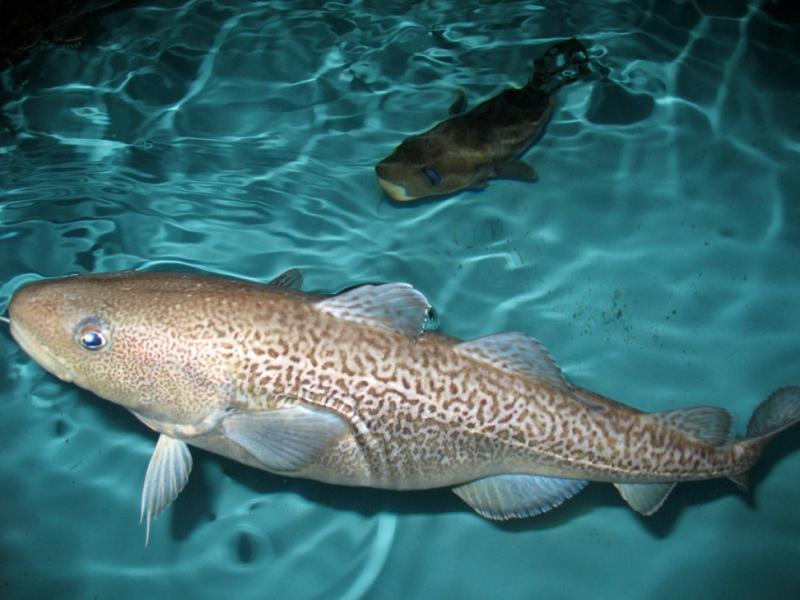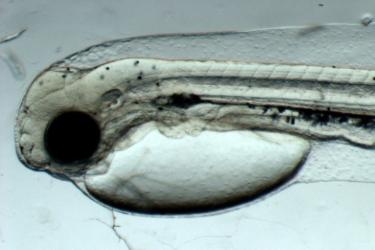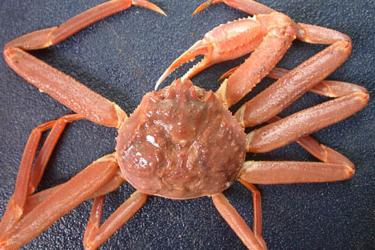Living in a lakeside cabin in Minnesota as a kid, Ben Laurel became interested in fishing at a young age. He learned that some lakes were generally warmer and some were colder, and as a result, they held different species of fish.
Today, Laurel’s research is based on the same principles he learned as a kid, that fish biology and where fish species live are heavily linked to water temperature. But instead of looking at Midwestern lakes, he now focuses on how rising temperatures driven by climate change are impacting marine fish populations in Alaskan waters.
When Ben isn’t in the field—catching Alaskan groundfish for scientific purposes—he researches young fish in the Alaska Fisheries Science Center’s unique cold water lab. The lab allows scientists to successfully study species from all regions of Alaska, including the Arctic. One of the main species he focuses on is Pacific cod. Pacific cod is the second largest commercial groundfish catch in Alaska, which makes understanding its future geographic distribution and abundance all the more important. But more than ever, the intensifying effects of climate change are hurting this fishery.
How is climate change affecting ocean conditions in the Bering Sea?
Alaska and the Arctic are experiencing the effects of climate change at a faster rate than in most other parts of the world. The ocean, especially in the Gulf of Alaska, has been warming rapidly. There has been a dramatic loss of sea ice in the Bering Sea and Chukchi Sea off of Alaska, which has contributed to rising water temperatures. In recent years, there has been no sea ice in regions where ice has always been present previously. Twenty years ago, we did not predict things would be changing this fast. Right now, it’s a race to figure out how these processes are impacting marine species in Alaska, like Pacific cod.
What do you know so far about the impacts of rising water temperatures on Pacific cod?
During recent marine heatwaves, we got a dress rehearsal of what the future climate might look like in the Gulf of Alaska, and Pacific cod did not fare well. When water temperatures change, it affects every single part of a fish’s life, both directly and indirectly. The challenge is understanding how different stages of a fish’s life are impacted by a change in temperature.
Initially, we guessed that Pacific cod would be fairly adaptable to climate change because they are exposed to a range of temperatures throughout their lives. Pacific Cod spend different parts of their life in different parts of the water column, from the bottom to the surface. So they are known to live in both cold and warm water. They start out as eggs in cold water at the bottom of the seafloor before rising to the warmer surface water in the spring. Then, the young travel to coastal nursery areas where they take up a bottom-dwelling lifestyle again.
To truly know how climate change is impacting them, we need to figure out if any parts of their life history are particularly vulnerable to warming temperatures.
Which Pacific cod life stage are you studying?
We’re looking at the first year of life for two reasons. The first reason is that eggs and young, developing fish are usually most sensitive to changes in temperature and other environmental drivers. If future ocean conditions change, then early life-stage fish will be impacted before older segments of the population.
The second reason is that survival during early life stages ultimately determines whether fish survive to adulthood. If we can understand the drivers of early life stage mortality, then we can predict what the fishery may look like in the following years. How young fish are faring under certain ocean conditions can serve as an early warning indicator for the vulnerability of the entire fishery. This is helpful for fishery management.
How are you researching this topic?
To understand how young Pacific cod fare under higher temperatures, we actually have to raise fish in the laboratory. At the Alaska Fisheries Science Center, we can raise young Pacific cod under a range of different temperatures and measure their survival, growth, and overall condition. We took Pacific Cod eggs, along with eggs from other species we’re interested in, and exposed them to temperatures from 0-12 degrees Celsius. These are the conditions they currently experience in nature. We also ran tests at higher temperatures to simulate what we might see in the future as the climate continues to change.
To validate our lab data, we compared our results to real world observations of how Pacific cod fared under similar temperatures in the ocean. If their survival rate matches up, then we know that our lab findings are comparable to how Pacific Cod might perform under higher temperature conditions in the future.
What did you find from these tests?
What we found was surprising. We generally thought of Pacific cod as a thermal generalist. But when we raised the eggs in the lab, we found that their temperature tolerance was actually very narrow. To have the best hatch success, Pacific Cod eggs need to be in 3–6 degree Celsius temperature water. As a species, they are kind of like Goldilocks; they can’t be too hot or too cold.
After doing these tests, we checked the true hatch success when springtime temperatures were high in the Gulf of Alaska. And the results were consistent. We found that when temperatures on the seafloor were higher than 6 degrees Celsius, fewer larvae and juveniles less than a year old were observed in the ecosystem.
So now we know we have a biological metric that can use springtime seafloor temperature data to help predict Pacific cod’s hatch success. We can also predict the impacts on the fishery as temperatures continue to rise.
Waters off Alaska are warming quickly and sea ice is disappearing. Pacific cod will likely experience loss of spawning habitat at a higher rate than other species.
How are adult Pacific cod reacting to changing temperatures?
In the last 5 years, we have already started to see Pacific cod moving north into the Bering Sea in search of cooler waters. However, this region may lack comparable habitats to those that Pacific cod rely on in the Gulf of Alaska. Also, they may face conditions that are too cold for their eggs in the Bering Sea since they have such a narrow thermal window for hatch success.
What economic and ecosystem impacts could we expect from Pacific cod’s shift northward?
There are concerns about Pacific cod’s northward movement. The reliability of the Pacific cod fishery in the Gulf of Alaska will be affected because of this shift. But it may also impact other fisheries. Pacific cod are voracious predators. They like to feed on tanner crab, a valuable Bering Sea fishery already facing a lot of stress from climate change-driven changes. If Pacific cod increase their presence in the Bering Sea, the crab fishery could face a new threat.
While Pacific cod are an important predator species, we also need to consider their role as prey for larger marine life. Currently, Arctic cod, a species that resides in the Northern Bering and Chukchi Sea, serves as a great source of nutrition for many species in that area. Seabirds, ringed seals, narwhals, belugas, and other fish all prey on Pacific cod. Compared to other cod species, they are energetically the richest in fat content. But if Pacific cod changes its distribution and begins to replace Arctic cod, there could be a decrease in the quality of food available for predators.
Each of these cascading impacts are topics of future research we’ll pursue. Expanding our broodstock of Pacific cod at the lab, we also want to look into how these fish might adapt to warmer waters. For instance, do the eggs of fish that have acclimated to slightly warmer temperatures have higher hatch success in warmer water? Is there evidence of warm-tolerant genotypes? There may still be some mechanisms by which Pacific cod are able to adapt future generations to warming waters. However, we need longer-term studies to answer these questions






